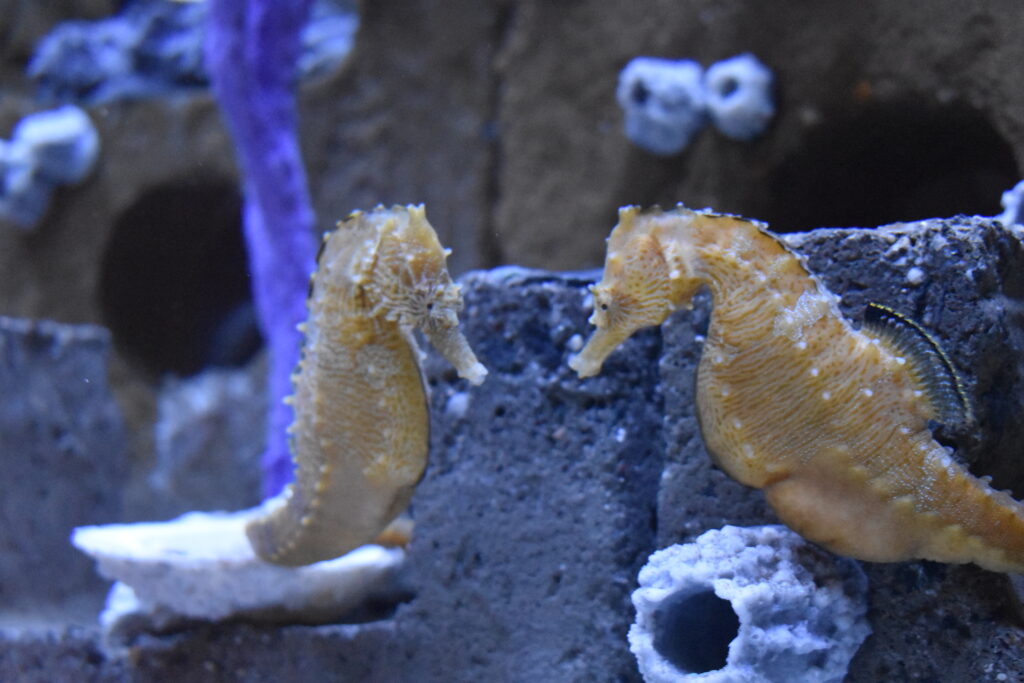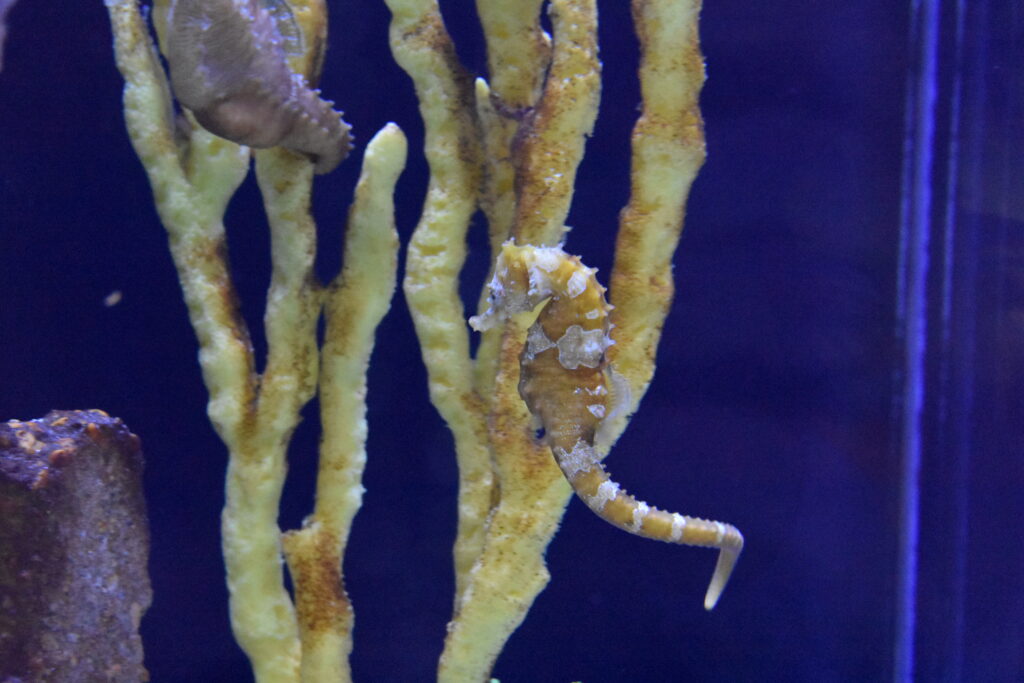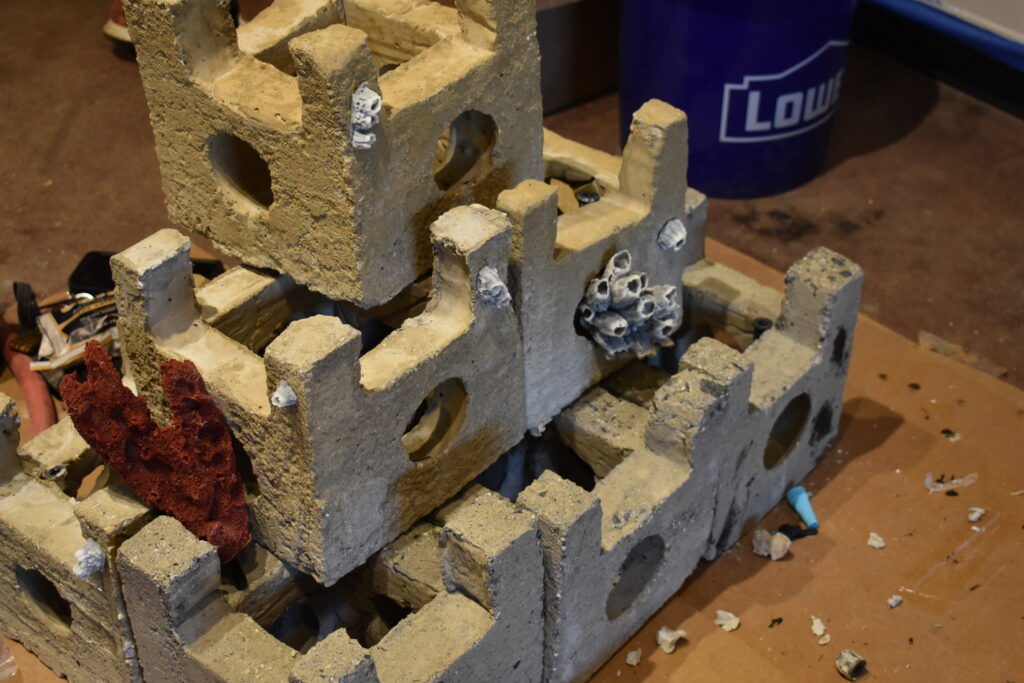Welcome to the Subbergs
Today is World Oceans Day! While the Virginia Zoo doesn’t have as many aquatic animals as our friends over at the Virginia Aquarium, there is one species currently (pun intended) found swimming on Zoo grounds. On land at the Zoo, we have our equines, the Hartmann’s mountain zebras, and in the water we have our not-actually-equines, the Lined seahorses!
When planning for species within the World of Reptiles, seahorses were a top choice for display. Seahorses are a fan favorite for their unique breeding, the calming way they swim and their imaginative name – there’s no denying they resemble a horse, but from the sea… The species of seahorse found at the Zoo also has ties to our area, the Chesapeake Bay, giving way for the Zoo to take our guests’ pre-existing interest in these small creatures to new depths (another pun intended).

Lined seahorses can be found in coastal waters from Nova Scotia down to Florida, in the Gulf of Mexico, through the Caribbean and parts of South American coasts. They have even been spotted living among shallow bay grasses in the Chesapeake Bay, the only species to be spotted here.
Seahorses are weak swimmers, but have a strong prehensile tail that is used to anchor themselves to objects like seaweed, coral reefs and even man-made objects. Individuals of this species can measure up to five inches long. Their coloration varies greatly and they can be gray, orange, brown, yellow, red and even black. There is a white “lined” pattern on the neck, earning the species’ name. In the wild, the typical lifespan of a lined seahorse is around one year, while under human care they can live to be four years old.
This species, like all seahorses, reproduces differently than many animals. Pairs mate for life and have an elaborate courtship ritual. The female lays her eggs in a pouch on the male’s belly, where they are fertilized and incubate before the male “gives birth” to up to 300 tiny fully-formed seahorses!

The lined seahorse is listed as vulnerable by the International Union for Conservation of Nature (IUCN) due to evidence of declining population numbers. They have been found in the domestic folk medicine and souvenir trades, and domestic and international aquarium trades, but the main reason for their population declining is still being researched.
The Virginia Zoo has a total of nine lined seahorses, four males and five females. The estimated births of the larger seahorses occurred in March 2017, and the smaller individuals are estimated to have been born in July 2018. The herd came from the North Carolina Aquarium at Fort Fisher.
Keepers say seahorses are a delicate species to care for, but are still persistent in offering the group enrichment, as they do with other animals in their care. Enrichment for these fish include offering their diet in different ways. They eat thawed Mysis shrimp (very tiny shrimp) twice a day, and the Keepers often offer the food from different areas of the exhibit to provide a variety for the seahorses. They also switch up the “decor” in the exhibit to offer the seahorses different options to anchor to.
Prior to our seahorses swimming onto exhibit, the Zoo worked with the Elizabeth River Project to acquire specific decor elements for the exhibit space, which Keepers will rearrange or add in various shells and coral for enrichment. For the main structure in the exhibit, the ERP donated oyster bergs, which are molded recycled concrete blocks that are shaped like castles and can be easily stacked. These bergs have been placed in various areas of the Elizabeth River, which runs behind the Zoo, and are an excellent shelter and breeding ground for oysters, barnacles and other small marine life, including seahorses, that have lost part of their native habitats due to human development, erosion and other human-led factors.

Several animal species at the Zoo are recommended to breed or as social companions by the Association of Zoos and Aquariums’ Species Survival Plan. The breeding plan for the lined seahorses at the Zoo, however, is a bit different, as we are a non-breeding participant of the SSP and our individuals are not chosen to pass on their genetics to the population as a whole. Although this herd isn’t recommended to breed, they can serve another pupose: to help educate our visitors on the importance of healthy waterways. Seahorses are considered an indicator species, meaning the water quality is considered healthy in areas where the species is present. Not only do these smaller fish serve a conservation and educational purpose, but they’re also pretty captivating to look at.